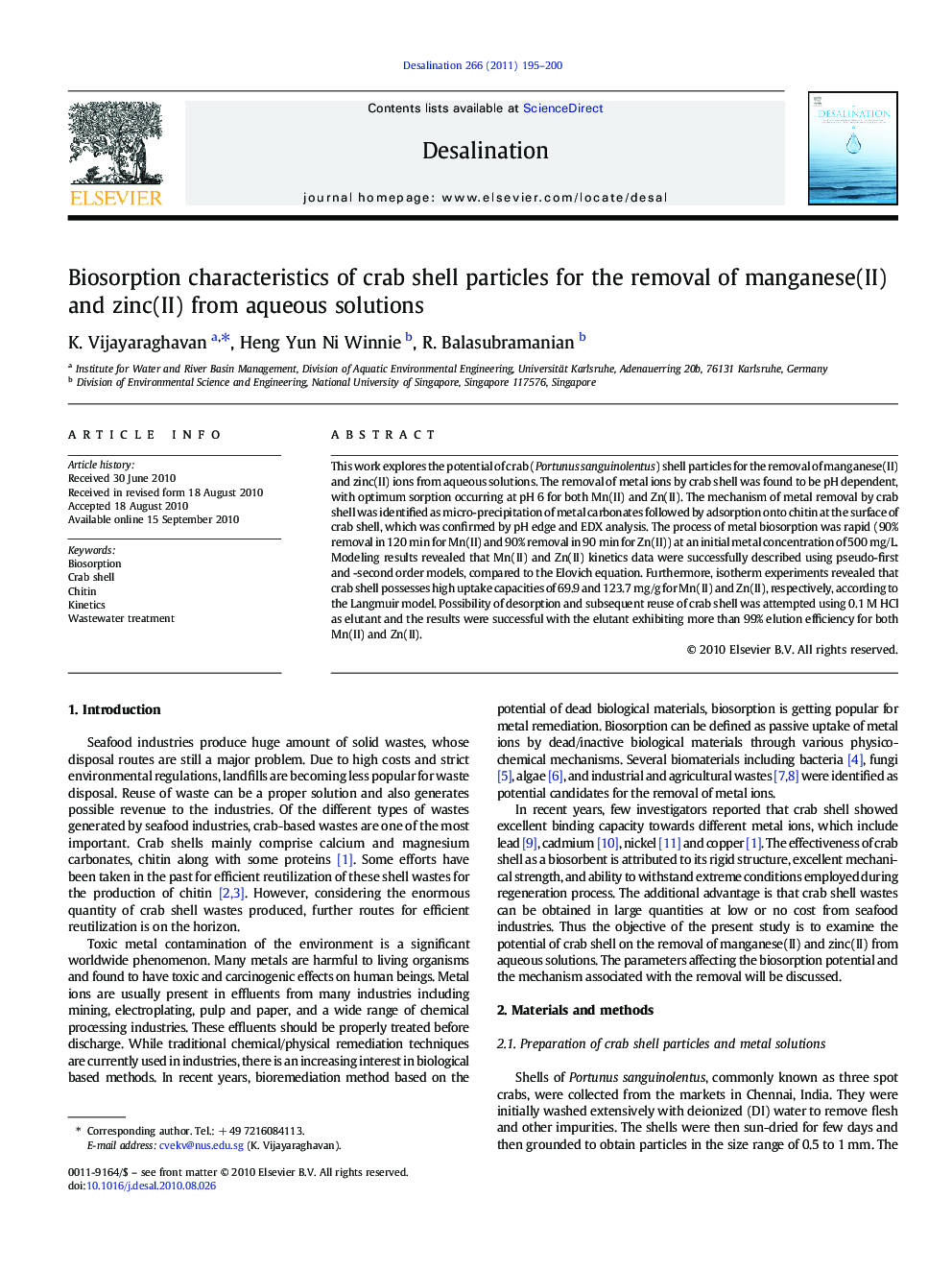| Article ID | Journal | Published Year | Pages | File Type |
|---|---|---|---|---|
| 625624 | Desalination | 2011 | 6 Pages |
This work explores the potential of crab (Portunus sanguinolentus) shell particles for the removal of manganese(II) and zinc(II) ions from aqueous solutions. The removal of metal ions by crab shell was found to be pH dependent, with optimum sorption occurring at pH 6 for both Mn(II) and Zn(II). The mechanism of metal removal by crab shell was identified as micro-precipitation of metal carbonates followed by adsorption onto chitin at the surface of crab shell, which was confirmed by pH edge and EDX analysis. The process of metal biosorption was rapid (90% removal in 120 min for Mn(II) and 90% removal in 90 min for Zn(II)) at an initial metal concentration of 500 mg/L. Modeling results revealed that Mn(II) and Zn(II) kinetics data were successfully described using pseudo-first and -second order models, compared to the Elovich equation. Furthermore, isotherm experiments revealed that crab shell possesses high uptake capacities of 69.9 and 123.7 mg/g for Mn(II) and Zn(II), respectively, according to the Langmuir model. Possibility of desorption and subsequent reuse of crab shell was attempted using 0.1 M HCl as elutant and the results were successful with the elutant exhibiting more than 99% elution efficiency for both Mn(II) and Zn(II).
Research Highlights► Crab shell effectively biosorbs manganese and zinc ions. ► Removal mechanism was identified as micro-precipitation followed by adsorption. ► Removal efficiency was affected by pH and solute concentration. ► The process of biosorption was found to be rapid
